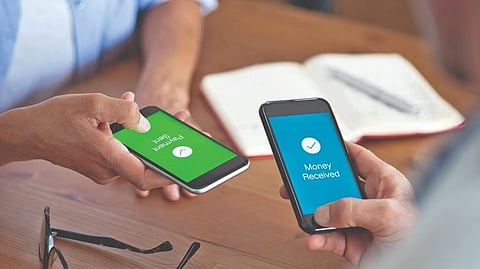

NEW DELHI: Indians found cash to be the only reliable and secure way to make payments. Traveling, buying movie tickets, shopping, reserving seats at your favourite restaurant, lending, borrowing, or any other activity.
Even at the onset of online businesses, customers preferred paying cash on delivery of the items instead of making debit card or credit card payments.
However, several challenges to the COD way of life have always been apparent. Firstly, it was inconvenient for buyers to be physically present to receive the goods at any time.
Further, the task of arranging cash at the time of delivery of goods was challenging. On the other hand, the logistics industry found it difficult to collect, store, and secure cash. Currently, e-commerce companies pay around Rs 40 per delivery for logistics surcharges. Additionally, there are insurance and cash-handling costs.
There are increased chances of consumers taking companies for a ride by ordering products and then cancelling, rejecting or changing orders midway, causing sellers to incur additional courier charges for the return shipment.
As per industry experts, the return rate is expected to be around 15-20%. Therefore, the COD payment method becomes more expensive for e-commerce players than any other digital payment.
However, India gradually adapted to the transition to digital payment methods due to conscious efforts made by retail behemoths to improve the overall delivery experience, making it more transparent and trackable.
Post-demonetization, digital payments found their way into the Indian psyche.
Moreover, the government's immediate intervention in compelling telcos to reduce the costs of their services led to the fast penetration of internet services, even in the most rural parts of the country, pushing the use of digital payments.
While customers in metros and Tier 1 cities are fast to adopt digital payments, Tier 2 customers are gradually embracing the change. But the ambiguity of security and other details about paying online persists in the minds of consumers.
Also, they are more satisfied by paying on receiving the goods in hand. Consumers purchasing online for the first time want to avoid experimenting with different payment modes.
Recently, India has witnessed a steep rise in the number of eCommerce companies. These companies often provide incentives like cashback and free delivery for prepaid orders to push the use of prepaid cards, digital wallets, and pay-later options (credit card EMI, debit card EMI, and Buy Now Pay Later (BNPL).
But certain fake companies erode buyers' trust. Therefore, “Pay on Delivery” (POD) is trending in the e-commerce industry these days and is replacing the term COD.
It is because the POD term sounds generic and can include more payment methods like card payments on POS machines (available with delivery agents), net banking, or cash at the time of delivery.
The buyers can make cashless payments on the delivery of goods and further protect themselves from being cheated.
The e-commerce players offer a slew of digital payment facilities, thanks to the robust fintech ecosystem, to replace cash-based deliveries.
These include providing a Unified Payments Interface (UPI) infrastructure or sending payment links through SMS. At the time of delivery, buyers can ask the delivery agents to send the payment link via SMS.
Upon receiving the link, consumers can pay via debit card, credit card, or the Unified Payments Interface (UPI).
They can also pay by scanning the QR code or swiping their debit/credit card on the Point of Sale (POS) machines. These payment options climaxed during the COVID-19 season as they ensured social distancing between the customer and the delivery agent.
Further, pay-on-delivery transactions encourage people to spend more, thereby contributing to the growth of the e-commerce sector.
Online retailers can earn strong brand recognition by allowing seamless payment collection services.
The transformation from COD to 'Pay on Delivery' can bring transparency and accountability to the Indian payment system and reduce the expenditure of producing, handling, and distributing cash. Even with the payment being digital, refunds can be processed faster.
Several leading business players across sectors, like e-tailers, cab services and food aggregators, all owe big time to digital transactions, as their revenues have skyrocketed ever since the boom of e-payments.
Cashfree Payments is an omnichannel payment processing provider that helps you easily collect payments online and offline.
By partnering with Cashfree payments, the merchants can send payment links to their customers over SMS, email, WhatsApp, or any other channel of their preference and get paid sooner.
It offers more than 120 payment modes, such as credit/debit cards, UPI, Google Pay, Amazon Pay, Netbanking, wallets and other payment options. They can send dynamic codes for each payment or record cash transactions as well.
Such seamless payment solutions help businesses streamline their payments and provide a unified, positive customer experience as e-commerce platforms. The payments made are secure and fraud-free, backed by PCI-DSS.
Visit news.dtnext.in to explore our interactive epaper!
Download the DT Next app for more exciting features!
Click here for iOS
Click here for Android